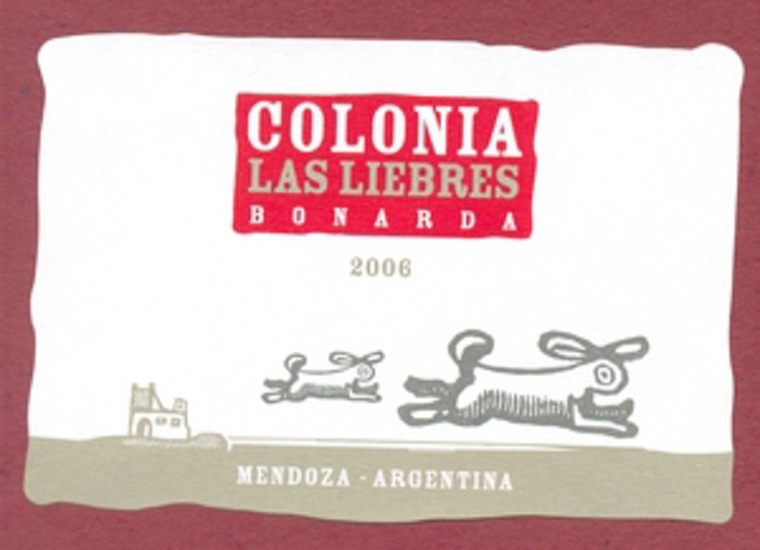For me, the exciting thing about wine is the hunt — tracking down great new examples of the familiar and, occasionally, coming across something completely different and satisfying, like the bonarda I tasted not long ago. Bonarda, you ask?
As you might imagine, bonarda doesn’t get a lot of buzz. I don’t recall seeing this red from Argentina highlighted in the many e-mails I get from wine merchants each week. Friends have never presented it at dinner at our house, announcing proudly, “We’ve brought you a nice little bonarda.” Nor can I recall seeing it on restaurant wine lists, although I bet I’d find it if I looked hard enough.
All of which is a shame, because the 2006 bonarda called Colonia Las Liebres is a first-rate wine and an excellent value at just $7. The grapes come from the Rivadavia and East Mendoza regions of Argentina; it’s imported by Michael Skurnik Wines, whose Web site notes: “Although originally an Italian grape variety from Piedmont and the Oltrepo-Pavese region, the bonarda grape has enjoyed much greater success in the rich soils and generous climate of Argentina, where it is one of the main grape varieties grown.”
In fact, bonarda is the most widely grown red grape in Argentina, though probably the least known outside that country. It’s overshadowed in the U-S market by malbec, which has really caught on in here recent years and is now considered Argentina’s “signature” variety, and for good reason.

Colonia Las Liebres, it turns out, is bottled by Altos Los Hormigos, which has made a name for itself with an excellent, inexpensive malbec sold under the Altos name. The company was started a decade or so ago by a group of Italian partners, including Marc de Grazia, a well-known promoter and marketer.
Colonia Las Liebres is young, purple and fresh. Made without oak, it shows notes of violets, blackberry and a touch of black licorice and is only moderately tannic. “A wallop of complexity in a $7 package,” I wrote in my notes. I’m always a bit skeptical of very young red wines, which can be harsh and often need a year or two or more to lose their rough edges. Bordeaux varieties such as cabernet sauvignon are in this category.
But bonarda is softer and delivers young. Colonia Las Liebres is refreshing, fruity and a bit rustic, and altogether enjoyable right now. It will match well with all kinds of foods, from meats to pasta sauces, pizza to barbecue. I’m even thinking of it as I consider my list of wines for Thanksgiving, but more on that in a couple of weeks.

Edward Deitch is the recipient of the 2007 James Beard Foundation Journalism Award for Best Multimedia Writing. He welcomes comments from readers. Write to him at